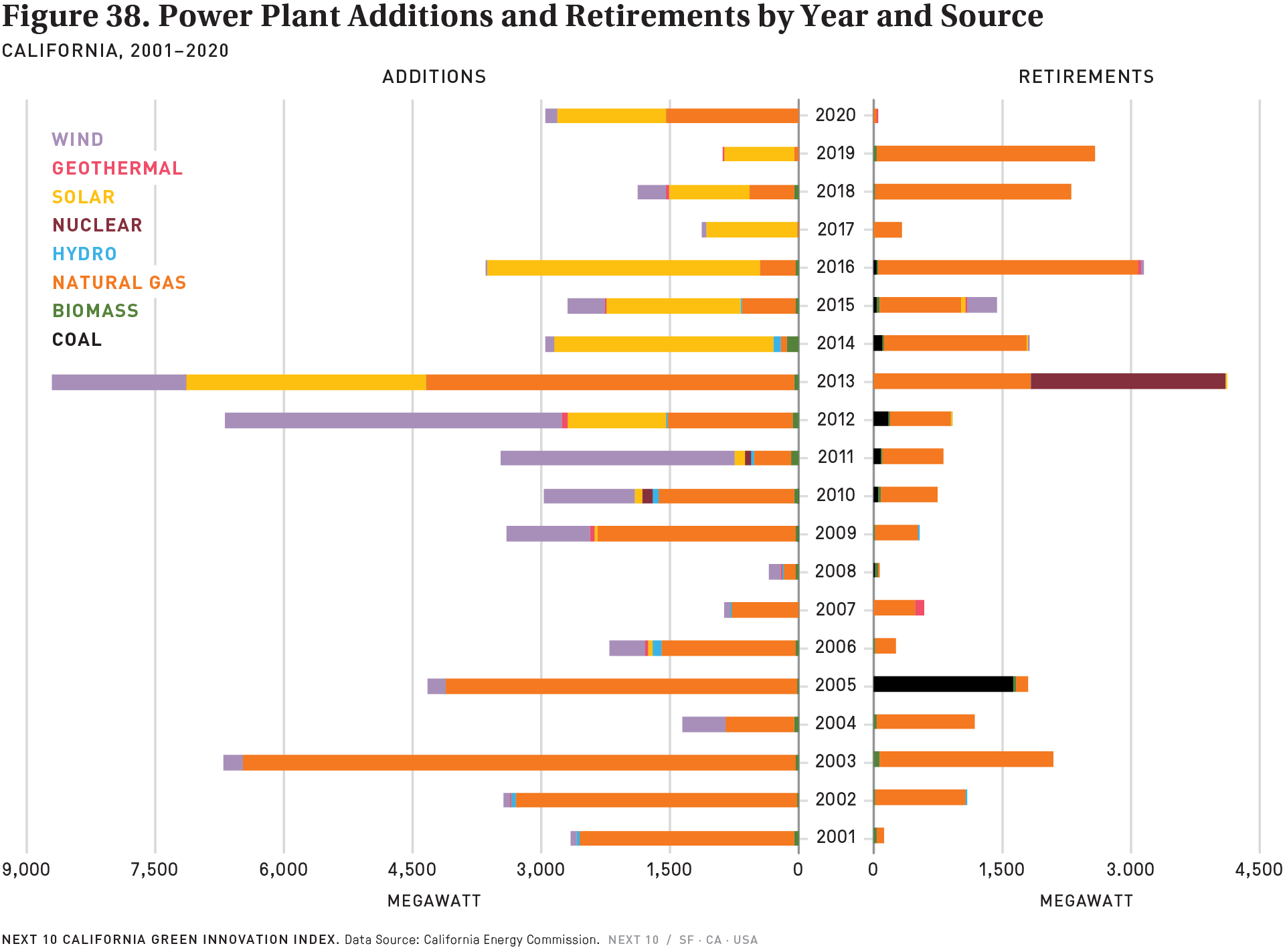Highlight
- Most of the utility-scale power plants that came online after 2010 were renewables or natural gas: Solar (over 15 GW from 2011 to 2020), followed by natural gas and wind (slightly under 10 GW for each). Meanwhile, most of the power plants retired (about 17.5 GW from 2011 to 2020) had been natural gas power plants (14 GW), most of which began operations from the 1950s to the 1970s.
Challenge
- The intermittent limitations of solar and wind generation and threats to grid resiliency due to natural disasters such as wildfire and drought are on-going challenges of California’s grid reliability. Often, the quickest solution to meet electricity shortages is to fire up natural gas power plants. In 2020, California actually added more natural gas plants (1.5 GW) than any other classes including solar (1.3 GW)—the last time this occurred was in 2013. Furthermore, in August 2021, the California Energy Commission approved licenses for gas-fired power units to help the state cope with continued electricity shortages.87 While maintaining reliability of the electricity supply is critical, these moves run at odds with California’s goal to decarbonize its electricity grid.
87 Proctor, D. California Will Add Gas-Fired Units to Increase Power Supply. POWERmagazine. August 20, 2021. Retrieved from: https://www.powermag.com/california-will-add-gas-fired-units-to-increase-power-supply/
More About
Renewable Energy
Related Content
